6 Incredible Health Benefits Of Corn And Its Nutritional Value
Good old-fashioned corn on the cob is full of love, deliciousness, and nutrition.
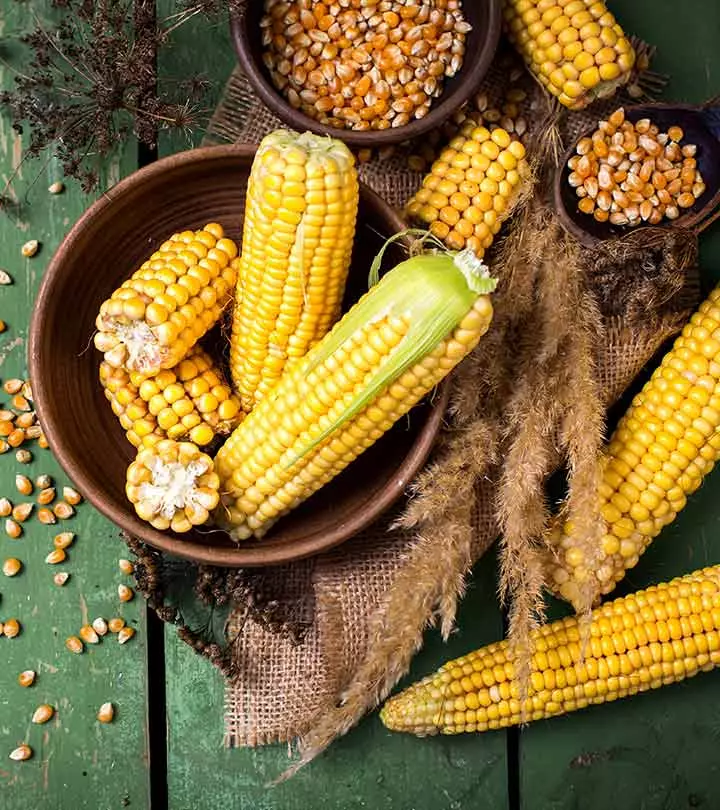
Image: Shutterstock
Be it boiled sweet corn or buttery warm popcorn, corn is a favorite for any age group.
Tortillas, raw and dressed corn cobs, nachos, or even cornmeal – this veggie tastes heavenly in any form.
Corn not only tastes great but also offers many health benefits. It can effectively manage many ailments. Did you know that it can promote hair growth and effectively combat inflammation? Learn more about the health benefits offered by this bright veggie by reading the article below. Keep scrolling!
 Know Your Ingredient: Corn
Know Your Ingredient: CornWhat Is It?
A cereal grain, also called maize, grows in the form of kernels on a cob and is covered with husks.
What Are Its Benefits?
Its antioxidant content may fight diabetes, boost iron levels, and aid in weight loss.
Who Can Consume It?
Anyone who is not allergic to corn can consume it.
How Often?
You can consume it daily but in moderation.
Caution
Overconsumption of corn can cause digestive problems.
In This Article
Corn: An In-depth Insight
This graph represents the global import value of corn in 2021 by country. China is in the lead (8.02 billion US dollars), followed by Mexico in second place (5.12 billion US dollars), and Japan in third place (4.74 billion US dollars).

Major Corn Importers Of The World
Source: Import value of corn worldwide in 2021, by leading country - StatistaCorn (Zea mays) is the edible grain (seed) of the cereal plant belonging to the grass family (Poaceae). This domesticated crop originated in the Americas and is one of the most widely distributed food crops in the world.
Corn is used as livestock feed, human food, biofuel, and raw material in several industries. The most popular varieties for consumption are yellow and white corn.

There are also varieties of corn with red, blue, pink, and black kernels that are often banded, spotted, or striped. That’s the result of some incredible genetic interplay!
 Trivia
TriviaThere are different types of corn based on kernel texture. Let’s take a look at a few of them.
Key Takeaways
- Corn helps control diabetes and improves vision.
- The high flavonoid content in corn may aid in weight loss.
- Corn also helps enhance your vision and boosts your immune system.
- Excess corn consumption can cause bloating and gas.
Types Of Corn
Dent Corn:
Has a depression in the crown of the kernel that is caused by unequal drying of the hard and soft starch making up the kernel.
Flint Corn: Contains a little soft starch and has no depression.
Flour Corn: Largely made up of soft starch and has soft, mealy, easily ground kernels.
Sweet Corn: Has wrinkled translucent seeds. The plant sugar is not converted to starch as in other types, thus imparting it sweetness.
Popcorn: An extreme type of flint corn that is characterized by small, hard kernels devoid of soft starch. Heating it causes the moisture in the cells to expand, making the kernels explode.
Corn is not only composed of starch but is also loaded with fiber, carbs, mineral, vitamins, and other micronutrients. Check out the next section for its nutritional value.
Nutrition Profile Of Corn
| Nutrition Facts Serving Size 166 g | ||
|---|---|---|
| Amount Per Serving | ||
| Calories 606 | Calories from Fat 66 | |
| % Daily Value* | ||
| Total Fat 8g | 12% | |
| Saturated Fat 1g | 6% | |
| Trans Fat 0 g | ||
| Cholesterol 0mg | 0% | |
| Sodium 58mg | 2% | |
| Total Carbohydrate 123g | 41% | |
| Dietary Fiber 12g | 48% | |
| Sugars 1g | ||
| Protien 16g | ||
| Vitamin A | 7% | |
| Vitamin C | 0% | |
| Calcium | 1% | |
| Iron | 25% | |
| Calorie Information | ||
| Amounts Per Selected Serving | %DV | |
| Calories | 606(2537 kJ) | 30% |
| From Carbohydrate | 497(2081 kJ) | |
| From Fat | 65.8(275 kJ) | |
| From Protein | 42.7(179 kJ) | |
| From Alcohol | 0.0(0.0 kJ) | |
| Carbohydrates | ||
| Amounts Per Selected Serving | %DV | |
| Total Carbohydrate | 123 g | 41% |
| Dietary Fiber | 12.1 g | 48% |
| Starch | ~ | |
| Sugars | 1.1 g | |
| Fats & Fatty Acids | ||
| Amounts Per Selected Serving | %DV | |
| Total Fat | 7.9 g | 12% |
| Saturated Fat | 1.1 g | 6% |
| Monounsaturated Fat | 2.1 g | |
| Polyunsaturated Fat | 3.6 g | |
| Total trans fatty acids | ~ | |
| Total trans-monoenoic fatty acids | ~ | |
| Total trans-polyenoic fatty acids | ~ | |
| Total Omega-3 fatty acids | 108 mg | |
| Total Omega-6 fatty acids | 3481 mg | |
| Protein & Amino Acids | ||
| Amounts Per Selected Serving | %DV | |
| Protein | 15.6 g | 31% |
| Vitamins | ||
| Amounts Per Selected Serving | %DV | |
| Vitamin A | 355 IU | 7% |
| Vitamin C | 0.0 mg | 0% |
| Vitamin D | ~ | ~ |
| Vitamin E (Alpha Tocopherol) | 0.8 mg | 4% |
| Vitamin K | 0.5 mcg | 1% |
| Thiamin | 0.6 mg | 43% |
| Riboflavin | 0.3 mg | 20% |
| Niacin | 6.0 mg | 30% |
| Vitamin B6 | 1.0 mg | 52% |
| Folate | 31.5 mcg | 8% |
| Vitamin B12 | 0.0 mcg | 0% |
| Pantothenic Acid | 0.7 mg | 7% |
| Choline | ~ | |
| Betaine | ~ | |
| Minerals | ||
| Amounts Per Selected Serving | %DV | |
| Calcium | 11.6 mg | 1% |
| Iron | 4.5 mg | 25% |
| Magnesium | 211 mg | 53% |
| Phosphorus | 349 mg | 35% |
| Potassium | 476 mg | 14% |
| Sodium | 58.1 mg | 2% |
| Zinc | 3.7 mg | 24% |
| Copper | 0.5 mg | 26% |
| Manganese | 0.8 mg | 40% |
| Selenium | 25.7 mcg | 37% |
| Fluoride | ~ | |
Yellow corn is the most commonly used variety of corn. White corn has the same nutritional value, with one exception – yellow corn has more fiber than the white variety.
Corn has an interesting phytochemical profile too.
Among cereals, corn has one of the highest levels of phenolic compounds. This means it has excellent antioxidant, anti-inflammatory, and anticancer properties. Corn also has cancer prevention properties, which can help in reducing the risk of getting cancer.
Anthocyanins, coumarins, trihydroxybenzoic acid, vanillic acid, caffeic acid, ferulic acid, chlorogenic acid, hydroxyphenyl acetic acid are present in corn.
Also, flavonoids like quercetin, rutin, hirsutrin, morin, kaempferol, naringenin, hesperitin, zeaxanthin, lutein, and their derivatives are commonly seen in this cereal (1).
Wait A Minute!
- Out of all the colors available in corn, purple corn is said to be the healthiest option because it is a reservoir of anthocyanin.
- The total flavonoid content in purple corn ranges from 307.42 to 337.51 mg/kg, while yellow-hued corn contains between 248.64 to 281.20 mg/kg.
Since corn is a treasure chest of phytochemicals, eating it will give you a total health makeover.
Learning corn’s nutritional composition can help you maximize its benefits, and experimenting with different cooking techniques will give your meals even more variation. Scroll down to know more.
Preparation Methods Of Corn
Corn can be enjoyed in various forms, such as boiled, grilled, or added raw in salads and salsas. Changing up your corn recipes can improve your diet because different preparation techniques preserve distinct nutrients. While grilling brings out a smokey flavor that goes well with spices, boiling makes corn soft and simple to digest. Corn is a flexible addition to meals since it adds a fresh, crunchy texture to salads and salsas that go well with other foods.
The antioxidants present in corn help cure a broad spectrum of diseases. Want to know which ones?
Alright, then! Brace yourselves for a healthy dose of science and evidence.
What Are The Benefits Of Eating Corn?
1. Controls Diabetes
Corn helps in diabetes management. Hyperglycemia (increased blood glucose levels) results in hypoxia (low oxygen level in blood). Hypoxia gets aggravated when there are free radicals in your blood. Corn also helps to aid blood pressure and promote heart health.
These free radicals or reactive oxygen species trigger inflammation of tissues and undesired proliferation of cells.
The anthocyanins and flavonoids present in corn are potent free radical scavengers. They eliminate free radicals, improve blood flow, protect pancreatic β-cells, increase insulin secretion and sensitivity, and prevent renal failure (2), (3).
In addition, the hair or silk of sweet corn may help treat diabetes. Suituapui, a blogger, explained how her late father treated his diabetes with sweet corn silk. She writes, “It was good for treating diabetes, so he went round collecting all that he could find and dried them in the sun. He would boil it to make tea and drink and eventually, he managed to get everything under control (i).” This highlights one of the lesser-known sweet corn benefits, especially for those managing diabetes naturally.
2. Might Aid Weight Loss
Corn silk – which is the stigma of maize – is a soft, thread-like waste material that is either green or yellow. There are notable corn silk benefits as it contains many essential flavonoids, tannins, saponins, alkaloids, and sitosterol, along with calcium, potassium, and magnesium.
These phytochemicals in corn silk regulate the genes that control fat accumulation, fat cell (adipocytes) differentiation while increasing the rate of lipolysisi A metabolic process that breaks down fat cells in the body to reduce the volume of fatty tissue and tightens the skin. , and fatty acid metabolism. This can potentially help you lose weight (4).
However, many papers have demonstrated the role of corn and its starch in weight gain and obesity (5).
3. Could Reduce Inflammation
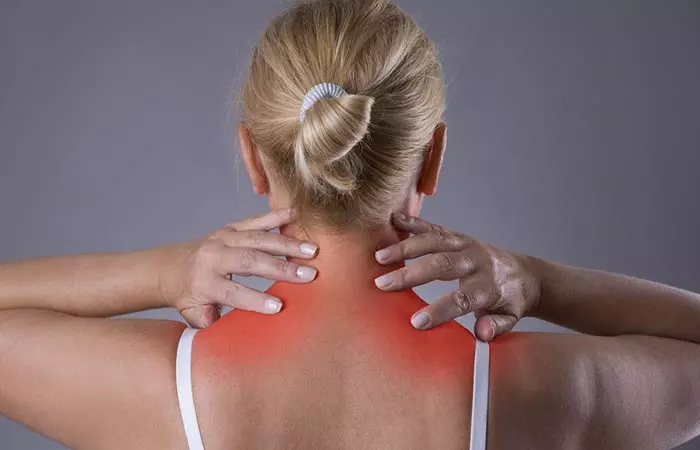
Inflammation is your body’s way of responding to threats like pathogens, free radicals, heavy metals, toxic intermediates, overdose, deficiency, external stimuli, and any other unfavorable physiological stress.
The proteins and phytochemicals present in different part of maize offer protection to your body from such pro-inflammatory agents. Corn gluten is one such protein. Flavonoids like quercetin, naringenin, and lutein, along with anthocyanins, also inhibit the activation of several pro-inflammatory genes and cellular mechanisms (6), (7).
As per this theory, a corn-rich diet can reduce constipation, asthma, arthritis, irritable bowel disease, GERD, and dermatitis.
However, there is extensive evidence out there that shows corn is a pro-inflammatory agent. Blame the starch and fats!
4. Boosts Iron levels
Anemia
develops as a result of iron deficiency in your body. A fall in hemoglobin levels leads to several developmental issues. Anemic children have stunted growth, retarded cognitive and psychomotor development, and weak/underdeveloped immune system.
Iron plays a vital role in oxygen and nutrient transport, energy metabolism, and menstruation.
You must have noticed in the nutritional profile of corn that it contains iron in abundance.
Adding maize or corn derivatives to your diet in required amounts can solve issues related to anemia, particularly in children and women. Having optimum iron in your body is also essential for the health of your eyes, hair, and skin health (8).
5. Enhances Endurance And Physique

All scientists agree that carbohydrates are the best fuel for your body during prolonged exercise. Our hero – corn – oozes carbs.
What’s even better is that corn has a moderate glycemic index of about 56 to 69.
The fiber and carbs present in corn help in building your dream body. Though the digestion process of carbohydrates is quicker compared to that of protein or fat, they can be stored in your cells for a long time without triggering inflammation. Therefore, corn is the solution, especially for athletes and regular heavy-duty gymmers (9).
6. Improves Vision
Lutein and zeaxanthin are two carotenoidsi Naturally occurring pigments in plants that are rich in antioxidants and enhance immunity and vision. that play an important role in vision development. Deficiency of these carotenoids causes cataract, macular degenerationi An eye disease that causes the macula (the central section of the retina) to deteriorate and lead to loss of vision. , and age-related ophthalmologic disorders.
Corn contains 21.9 μgg of lutein and 10.3 μg/g of zeaxanthin, along with ß-cryptoxanthin and ß-carotene, which promotes eye health.
When white, yellow, high-carotenoid, blue and red corns were tested for their lutein content, it was found to be the highest in yellow corn (406 µg/100 g) and lowest in blue and white corns (5.2 and 5.7 µg/100 g, respectively) (10).
Want to get rid of those thick spectacles? Binge on some fresh corn.
Even though corn has many health advantages, you should consider how it fits into your particular dietary requirements and preferences, especially if you have health issues. Scroll down to know more.
Dietary Considerations
Corn is an excellent grain for people with celiac disease or gluten intolerance, as it is gluten-free. However, it is also naturally high in carbohydrates and sugars, and should be consumed in moderation, especially for those monitoring their carbohydrate consumption. You may reap the benefits of corn while controlling your dietary requirements by balancing it with other foods high in nutrients.
What’s the best way to have corn? By adding it to your daily diet, of course. I’ve collected some simple, quick, and healthy recipes with corn for you. Let’s see how they turn out!
Healthy Recipes With Corn
1. Tangy Corn Salsa

What You Need
- Corn on the cob: 4 ears, with husk
- Black beans: 2 cans (15 oz.), unsalted, drained, and rinsed
- Plum tomatoes: 6, chopped
- Green bell pepper: 1, chopped
- Red onion: 1, diced
- Jalapeno peppers: 2, chopped
- Lime juice: 1 lime (equivalent)
- Cilantro: 2 teaspoons, freshly chopped
- Garlic: 2 cloves, minced
- Tomato juice: 14 oz.
- Tomato sauce: 14 oz.
- Kosher salt: 1 pinch or to taste
- Black pepper: 1 pinch, ground, or to taste
Let’s Make It!
- Preheat the grill on medium heat and lightly oil the grate.
- Place the corn ears on the heated grill and roast them until the husks show burn marks on all sides, and the corn kernels are cooked through.
- This could take about 20 minutes. Keep turning the corn ears at regular intervals.
- Let the corn ears cool down until they can be touched.
- Pull back the husks and remove the roasted kernels from the ears. Place the cooked kernels in a large salad bowl.
- Lightly toss the corn with black beans, plum tomatoes, green bell pepper, red onion, jalapeno peppers, lime juice, cilantro, and garlic.
- Pour the tomato juice and tomato sauce over the salsa and toss all the veggies again.
- Season the salsa with kosher salt and black pepper.
- Chill the salsa for at least an hour, preferably overnight.
- Serve this versatile salsa along with some crispy nachos or tortillas. Now, enjoy this quick, affordable, filling, and gluten-free snack.
2. Quick-n-Creamy Corn Cake

What You Need
- Butter: ½ cup, melted
- Eggs: 2, beaten
- Dry cornbread mix: 1 packet (8.5 oz)
- Whole kernel corn: 1 can (15 oz), drained
- Creamed corn: 1 can (14.75 oz)
- Sour cream: 1 cup
Let’s Make It!
- Preheat oven to 350°F (175°C), and lightly grease a 9×9 inch baking dish.
- In a medium bowl, combine the butter, eggs, corn bread mix, whole corn, creamed corn, and sour cream.
- Spoon the mixture into the prepared baking dish.
- Bake the mix in the preheated oven for 45 minutes or until the top is golden brown.
- Serve fresh and warm with some cranberry crush or homemade cream for satiety.
Once you taste these dishes, you will not want to stop cooking and experimenting with corn. Corn is one of the tastiest additions to any dish.
 Trivia
TriviaBut does that mean you should have it every day? How do you think your body would react to high doses of corn? Read on to find out.
Does Corn Have Any Side Effects?
Yes, it does!
The high starch, fatty acids, and linoleic acid content of corn can cause the following side effects (11), (12):
- Inflammation
- Stomach cramps
- Constipation
- Acute dermatitis or skin allergy (if you are allergic to grass)
- Bloating and gas
- Intestinal blockage
- Hemorrhoids
- Sudden weight gain
There is also a common misconception that you should avoid consuming corn to prevent diverticulitis (infection in the digestive tract). However, the actual side effects of corn are more related to digestive discomfort rather than directly causing such infections. Let us look at some data in the next section to find the truth.
Is Corn Bad For Diverticulitis?
In the past, individuals with diverticulitis were often advised to avoid nuts, corn, popcorn, and seeds to lower the risk of diverticular disease. However, there is limited evidence to support this advice. A study published in the Journal of American Medical Association that followed 47,228 men from 1986 to 2004 found that consuming nuts and popcorn was, in fact, linked to a reduced risk of the development of diverticular disease over an 18-year period. Therefore, individuals with known diverticula can safely consume nuts, corn, grains, and popcorn without increasing the risk of diverticulitis (13).
Infographic: Sweet Corn Vs. Field Corn
There are different varieties of corn based on their kernel texture. Out of all, sweet corn and field corn are the most popular types. While sweet corn is widely used for human consumption, field corn is used as animal feed or for flour production. Click on the infographic below to learn about sweet corn and field corn. Illustration: StyleCraze Design Team
Corn is a popular edible cereal grain with a rich nutritional profile. It contains various vitamins and minerals, proteins, fats, and carbohydrates. The benefits of corn can also be attributed to its phenolic compounds, anthocyanins, and carotenoids. Corn exhibits excellent anticancer, anti-inflammatory, and antioxidant properties that help treat many ailments. Consumption of corn may control blood glucose levels, aid in weight loss or weight management, reduce inflammation, improve brain function, boost iron levels, and enhance one’s endurance and physique. Corn oil can even help to stabilize your cholesterol levels (14). You can prepare many healthy, delicious recipes with corn, including tangy corn salsa and cake. However, its high linoleic acid and starch content may cause some side effects. Excess consumption may cause inflammation, constipation, stomach cramps, bloating and gas, intestinal blockage, and hemorrhoids. Hence, consume corn in moderation – and stop intake when you experience any side effects. Also, consult your doctor in case of any emergencies.
Frequently Asked Questions
Is corn better than rice?
Corn contains more protein and fiber than rice and is considered a healthier option than rice (15), (16).
Is corn high in sugar?
Yes. Corn is high in natural sugars. One ear of fresh corn (102 g) contains 6.38 g of sugar (16). Hence, it is recommended to consume it in moderation.
How much corn should I eat in a day?
A 1-cup serving of corn is considered healthy to eat a day.
Illustration: Health Benefits Of Corn And Its Nutritional Facts
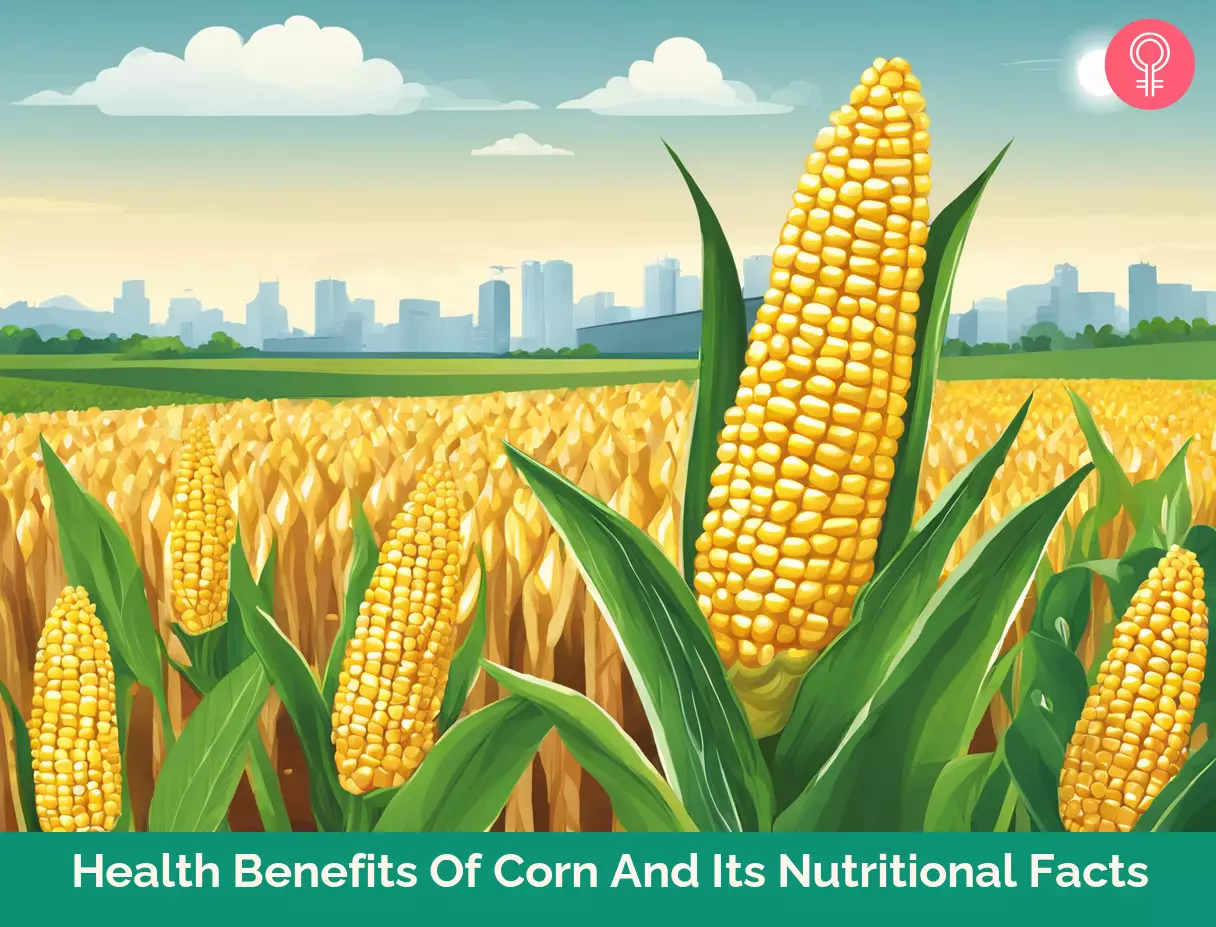
Image: Stable Diffusion/StyleCraze Design Team
Discover 10 amazing benefits of corn for your health and nutrition! Watch this video to learn how this versatile food can help you stay healthy and fit.
Personal Experience: Source
StyleCraze's articles are interwoven with authentic personal narratives that provide depth and resonance to our content. Below are the sources of the personal accounts referenced in this article.
i. Worry not…;https://suituapui.wordpress.com/2021/05/02/worry-not/
References
Articles on StyleCraze are backed by verified information from peer-reviewed and academic research papers, reputed organizations, research institutions, and medical associations to ensure accuracy and relevance. Read our editorial policy to learn more.
- Health Benefits of Purple Corn (Zea mays L.) Phenolic Compounds
https://www.researchgate.net/publication/312861372_Health_Benefits_of_Purple_Corn_Zea_mays_L_Phenolic_Compounds - Anti-diabetic effect of purple corn extract on C57BL/KsJ db/db mice
https://pubmed.ncbi.nlm.nih.gov/25671064/ - Anthocyanin-Rich Purple Corn Extract Inhibit Diabetes-Associated Glomerular Angiogenesis
https://www.ncbi.nlm.nih.gov/pmc/articles/PMC3835931/ - High maysin corn silk extract reduces body weight and fat deposition in C57BL/6J mice fed high-fat diets
https://www.ncbi.nlm.nih.gov/pmc/articles/PMC5126406/ - High-fructose corn syrup causes characteristics of obesity in rats: increased body weight body fat and triglyceride levels
https://www.ncbi.nlm.nih.gov/pmc/articles/PMC3522469/ - Anti-inflammatory effect of enzymatic hydrolysate of corn gluten in an experimental model of colitis
https://pubmed.ncbi.nlm.nih.gov/20487224/ - Anti-inflammatory effects of Zea mays L. husk extracts
https://www.ncbi.nlm.nih.gov/pmc/articles/PMC4992323/ - Effects of dietary corn on hematological response of anemic rats to ferrous sulfate
https://pubmed.ncbi.nlm.nih.gov/619040/ - Effect of preexercise ingestion of modified cornstarch on substrate oxidation during endurance exercise
https://pubmed.ncbi.nlm.nih.gov/17693685/ - Dietary Sources of Lutein and Zeaxanthin Carotenoids and Their Role in Eye Health
https://www.ncbi.nlm.nih.gov/pmc/articles/PMC3705341/ - The effects of resistant starches on inflammatory bowel disease in preclinical and clinical settings: a systematic review and meta-analysis
https://www.ncbi.nlm.nih.gov/pmc/articles/PMC7653724/ - Starches Sugars and Obesity
https://www.ncbi.nlm.nih.gov/pmc/articles/PMC3257742/ - Nut, corn, and popcorn consumption and the incidence of diverticular disease
https://pubmed.ncbi.nlm.nih.gov/18728264/ - Corn oil intake favorably impacts lipoprotein cholesterol, apolipoprotein and lipoprotein particle levels compared with extra-virgin olive oil
https://pubmed.ncbi.nlm.nih.gov/27677368/ - Rice, white, glutinous, unenriched, cooked
https://fdc.nal.usda.gov/fdc-app.html#/food-details/169711/nutrients - Corn, sweet, yellow, raw
https://fdc.nal.usda.gov/fdc-app.html#/food-details/169998/nutrients
Read full bio of Alexandra Dusenberry
Read full bio of Swathi Handoo
Read full bio of Ravi Teja Tadimalla
Read full bio of Aparna Mallampalli









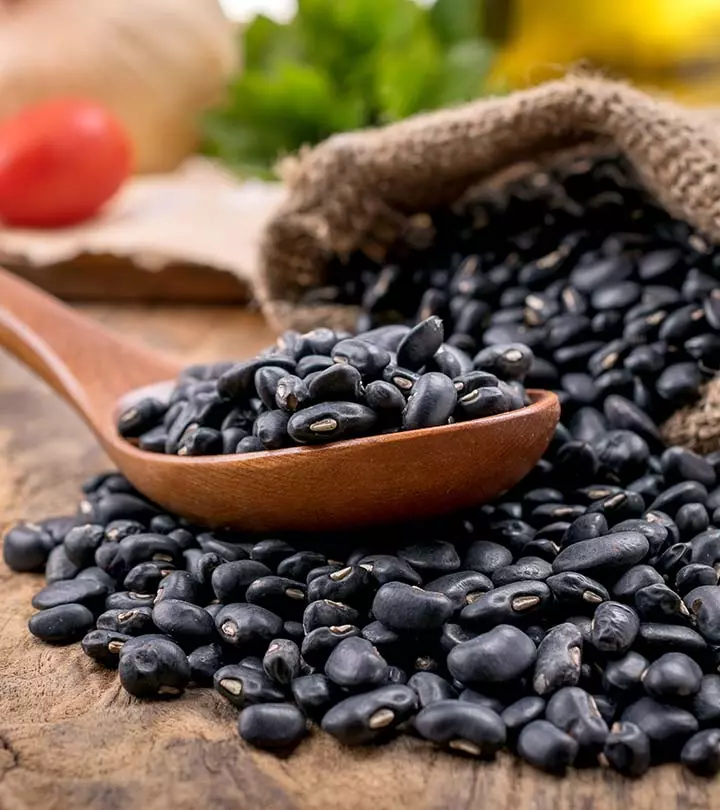
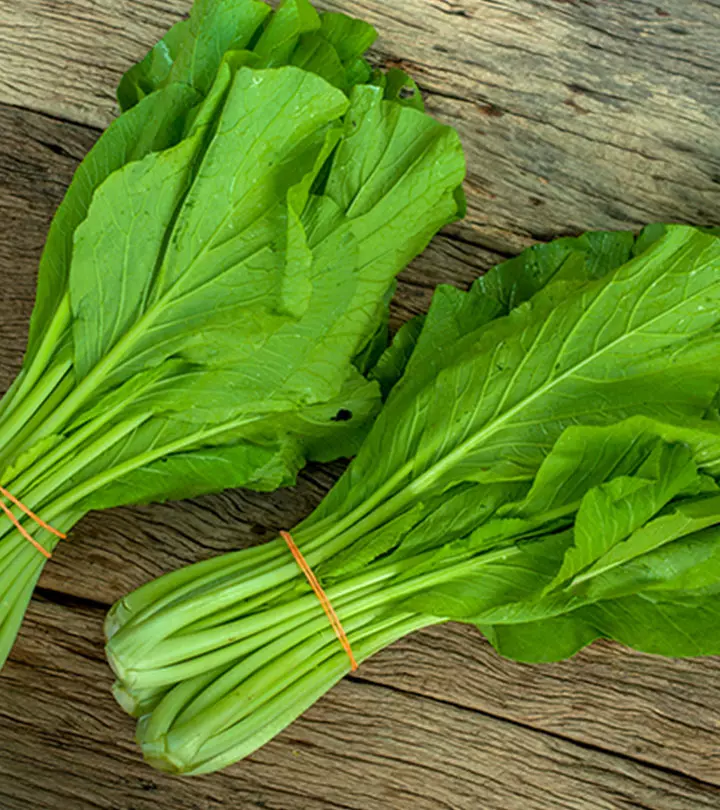
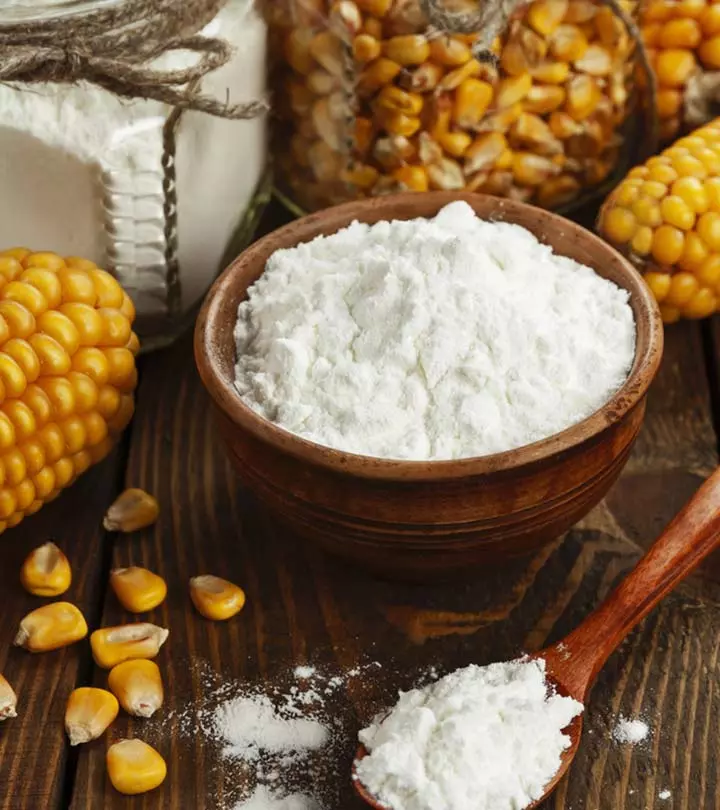

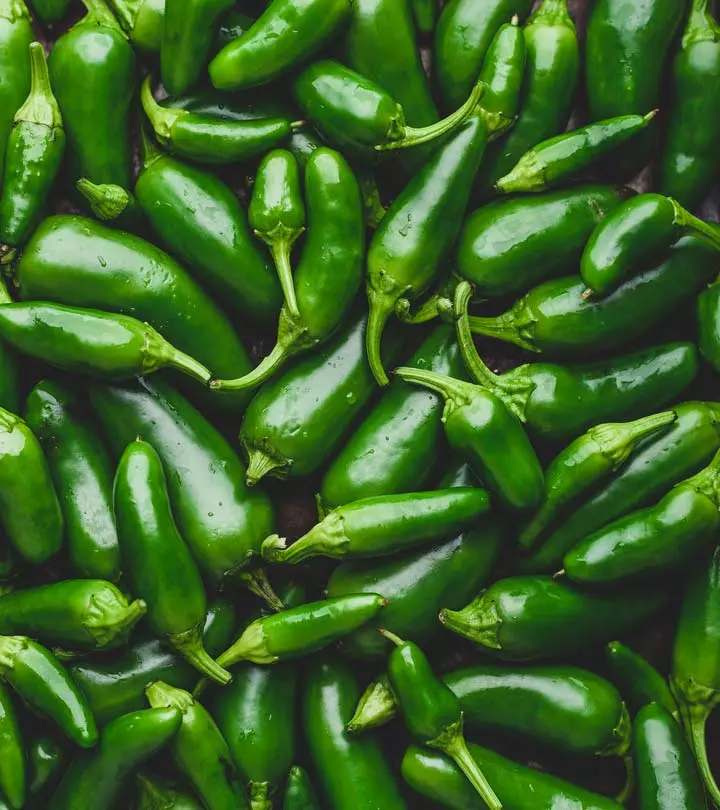
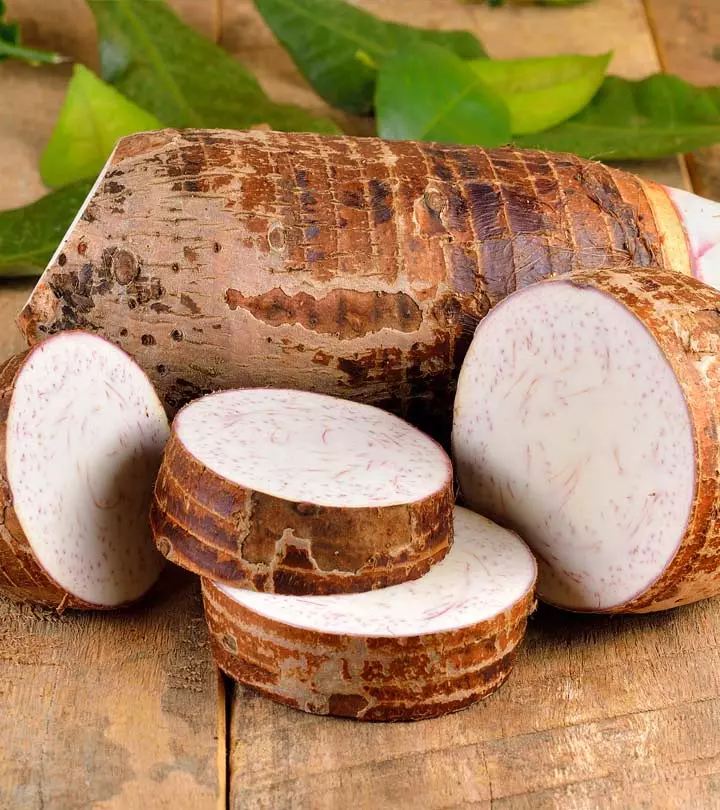
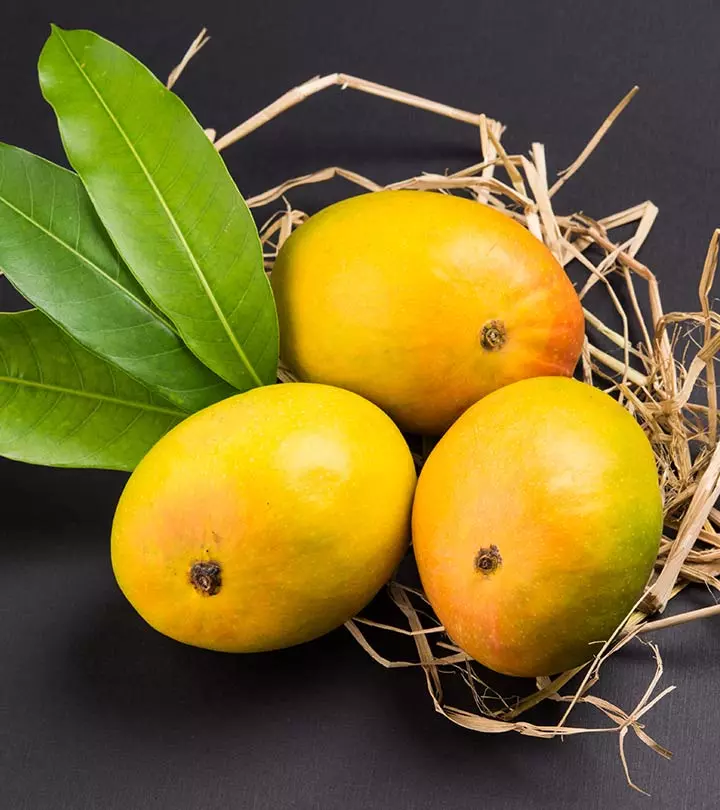
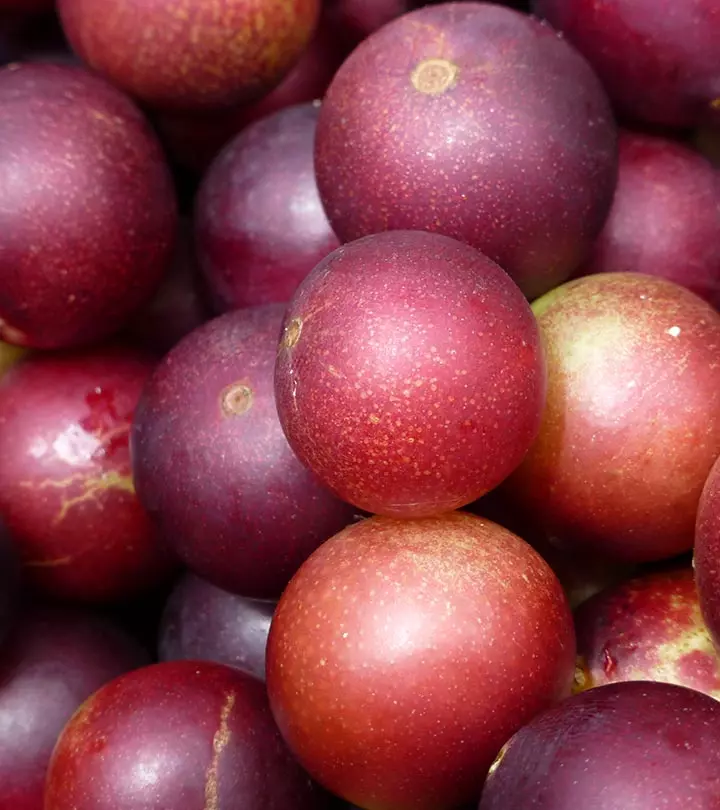
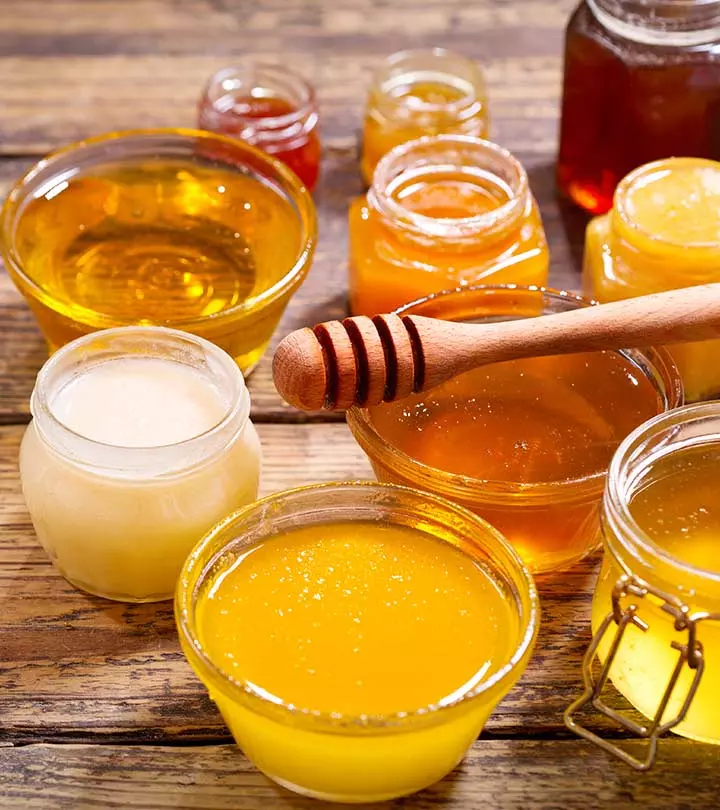
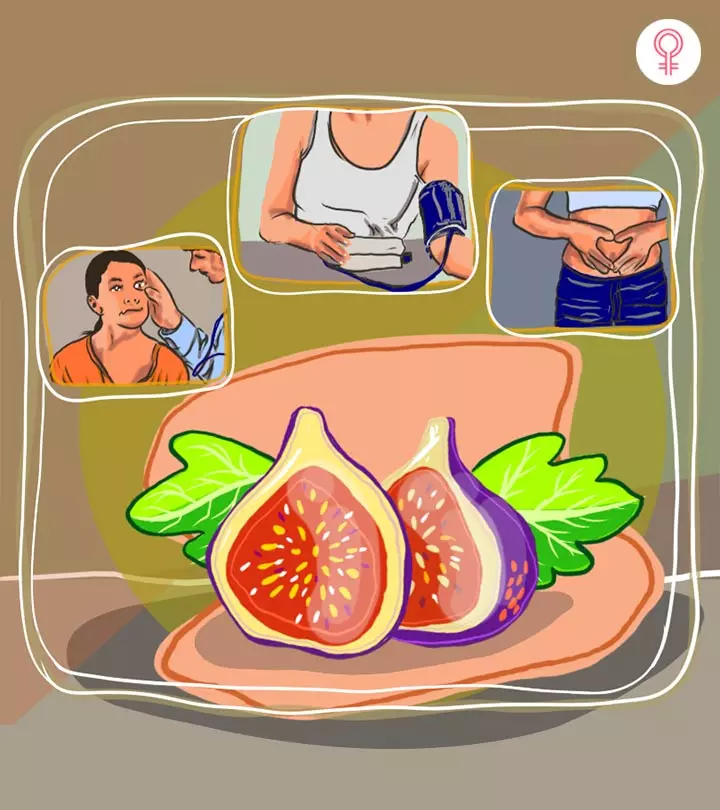
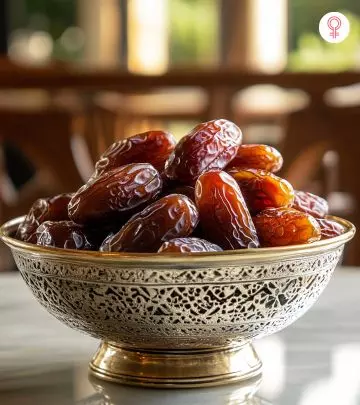
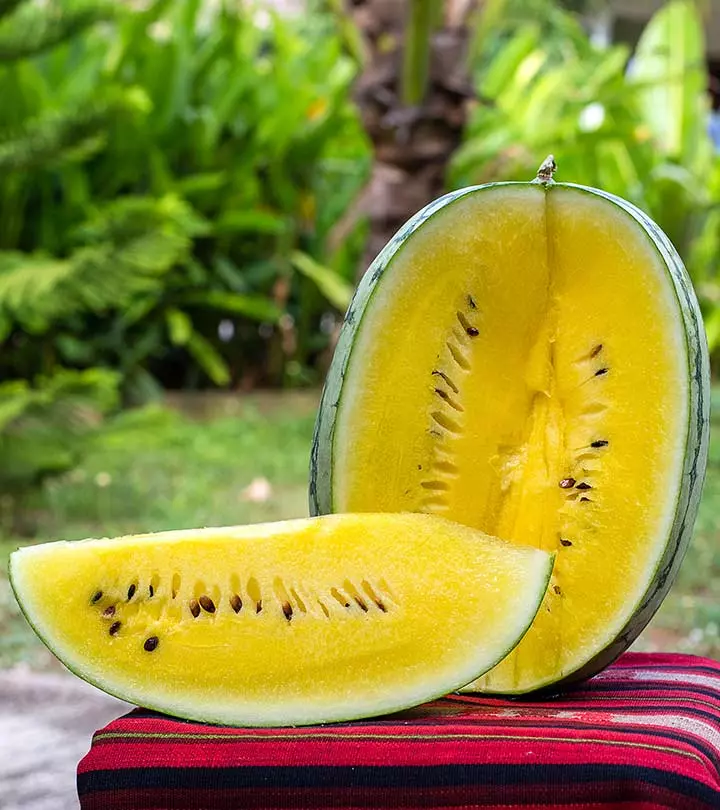
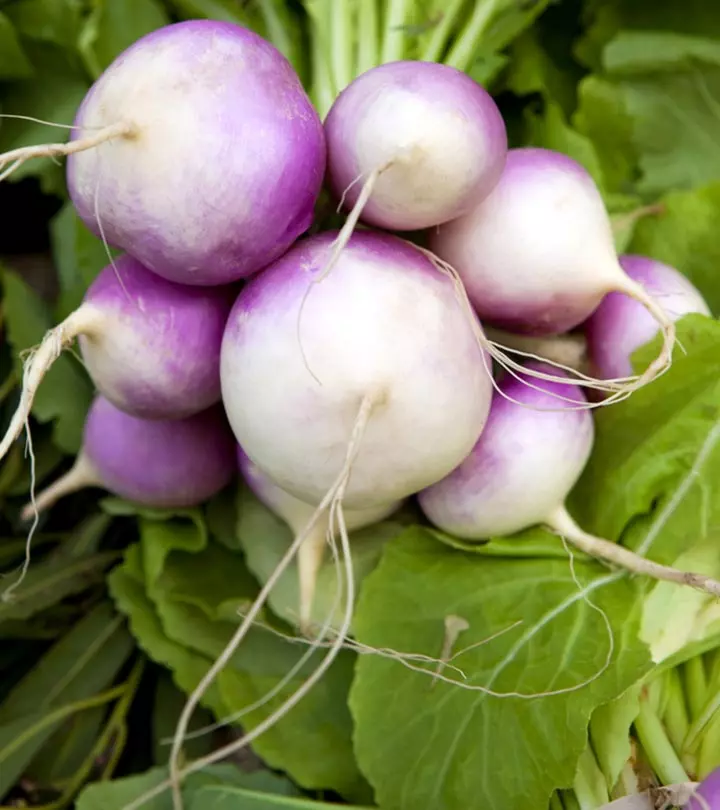
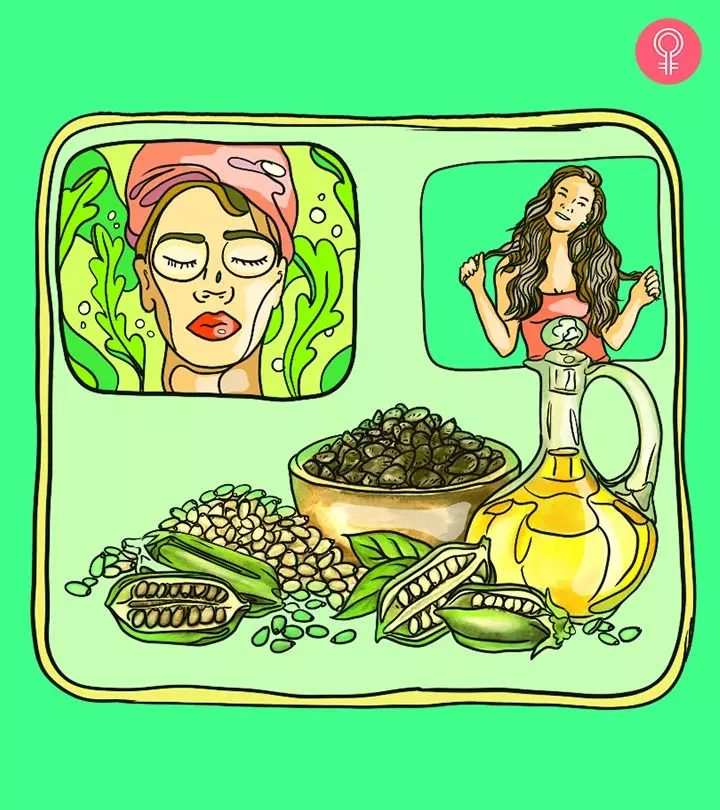
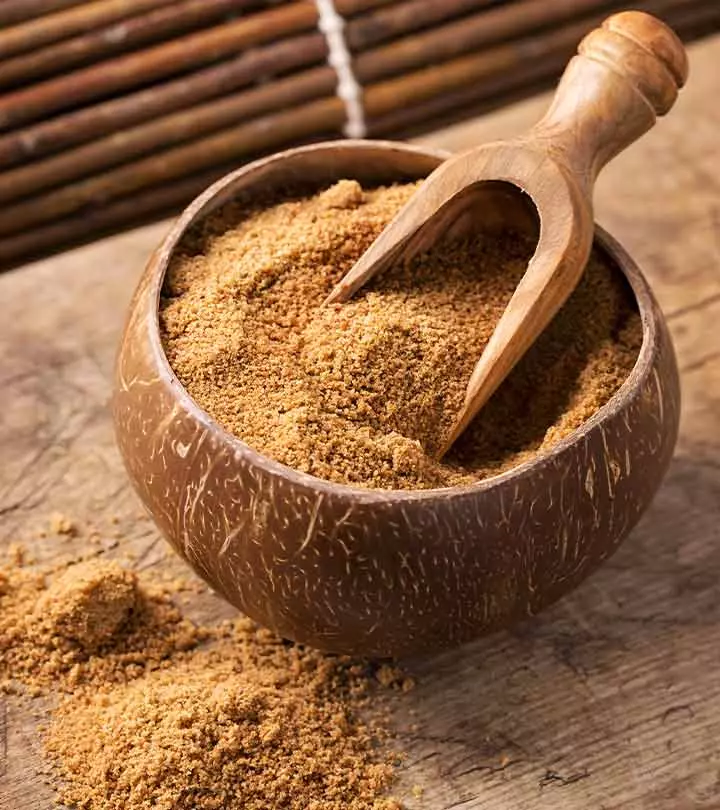
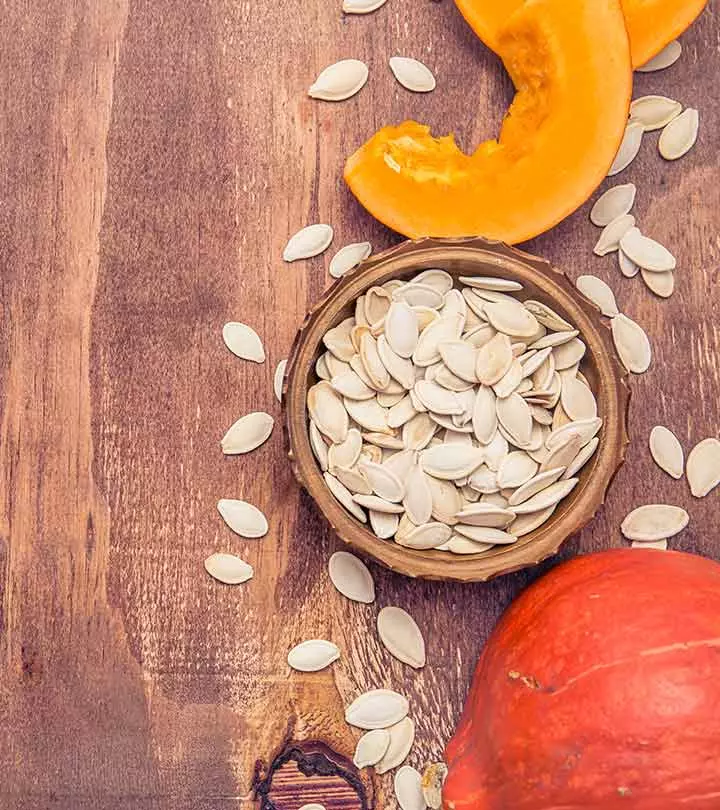
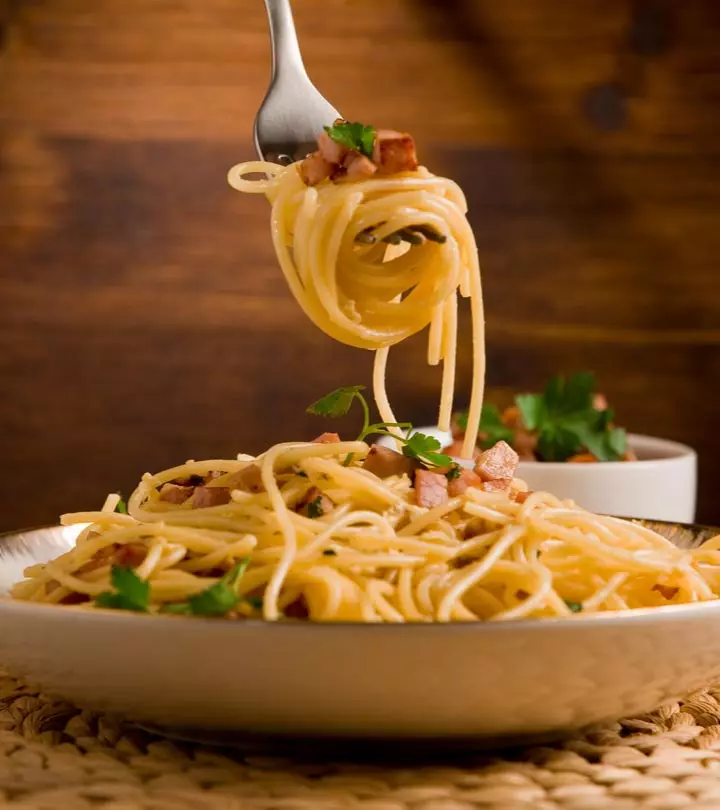
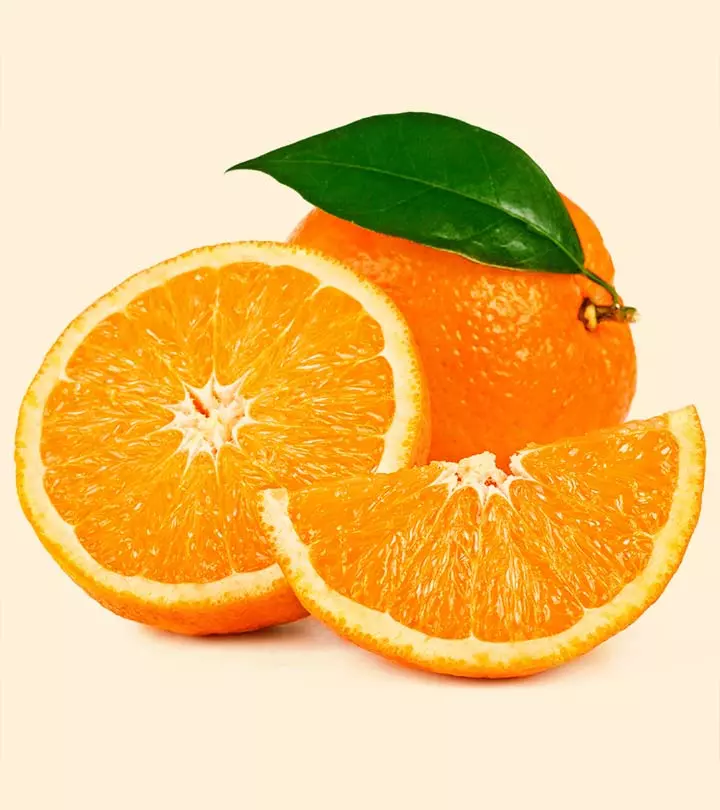

Community Experiences
Join the conversation and become a part of our empowering community! Share your stories, experiences, and insights to connect with other beauty, lifestyle, and health enthusiasts.